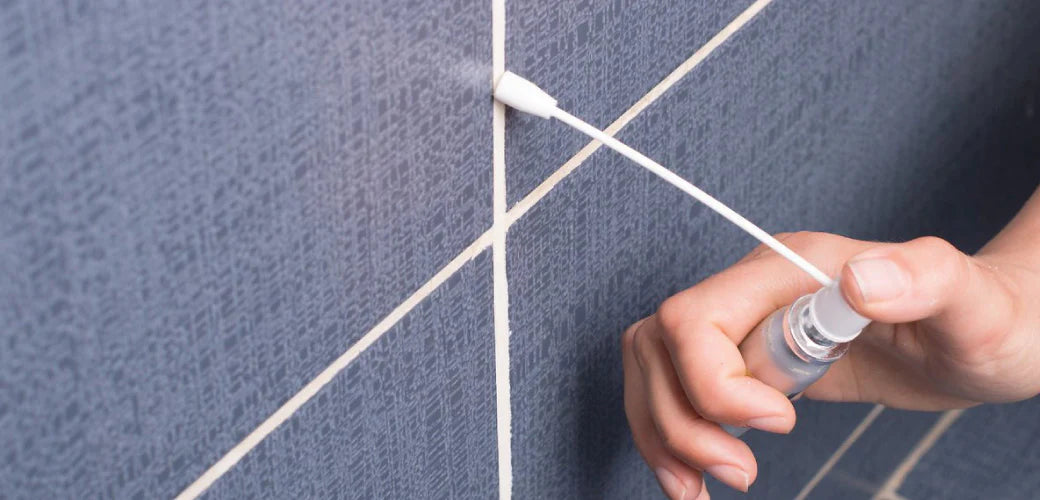If you’re bracing for the big Spring clean, you could be tempted to throw your hands up in despair when faced with the wear and tear in your bathroom. You could even be despairing at having to remove mould and mildew once again and wishing you could splash out on a new bathroom.
There’s a middle way - learn how to regrout your bathroom tiles to give your bathroom space a new lease of life with our step-by-step guide.
Why Should You Regrout Your Bathroom Tiles?
- It’s time to regrout when the grout between your tiles discolours
- When the grout begins to erode, leaving tiles exposed, or when it has started to wear away and go lumpy, it’s time to dig it out and start again
- Your bathroom is a busy place you should find comfort in every day
- You’ll want to keep it looking good for guests and your sanity
- Besides, hygiene is everything in the bathroom and helps when your tiles look cleaned up and regrouted for that fresh new bathroom feel
Your Shopping List For Regrouting Bathroom Tiles
- Some plastic sheeting or a dust sheet to spread over your work area and across the doorway to contain the dust
- A set of old clothes to wear during this messy job
- A pair of suitable gloves for DIY
- Eye protection goggles and some knee pads will help keep you safe
- A grout rake, grout remover blade or electric grout grinder for removing the grout
- Grout - choose from various colours, from white to cream or grey and black, for a more contemporary styled bathroom
- Small tiling trowel for applying the grout
- An old damp cloth for smoothing down the grout
- A wet non-metallic sponge for cleaning off excess grout
- A dry, soft cloth and a bathroom spray for polishing off dust once the new grout is dried up
- A small piece of smooth sandpaper for polishing off hardened grout residue post cleaning
- A vacuum cleaner for leftover dust in the bathroom
Your 8-Step Plan for Re-Grouting the Bathroom Tiles
We’ve prepared a simple step plan to see you through the process.
But first…
1. Should you re-grout over old grout?
You should only do so if only a few small areas of the existing grout need repair. Then, patch them up with new grout. Nevertheless, there will be better, longer, lasting results if you remove the old grout first.
2. Remove Old Grout First

Use a proper grout rake or remover blade to remove or scrape out the old grout by pushing it between the tiles to extract the old grout. Using an appropriate rake of grout will avoid damaging your bathroom tiles. Using other tools like a screwdriver may inadvertently scratch it.
- Run it along the tiles, working on the old grout whilst moving in one direction
- Alternatively, you can use an electric grout grinder, but it requires more precision to avoid damaging your tiles
- You can knock them out carefully with a scraper
3. Prepare The Grout

There are 2 types of grout.
- Powdered grout should be mixed up in a bucket according to the packet instructions
- Ready-mixed grout is like it says on the tin. Ready-to-go
4. Apply The New Grout

- Apply the grout using a tiling trowel. Using a trowel saves you time. In addition, a smaller trowel will give you a neater finish
- Continue to fill every grout line and corner without leaving any gaps. It’s ok to spread it out and be messy, as you can clean the excess later
- Avoid tiled areas that intersect with other surfaces such as countertops, floor, window frames or the door frame. These areas can be sealed with silicon after the grouting is done
5. Smoothing Down the Grout

- When you have filled the grout between all the selected tiles, you will need to smooth down the lines until all is level and make sure the grout is compacted into the grooves. Again, you should use a damp cloth if you don’t wish to get your fingers covered in grout
- Look out for holes in the finish or air pockets popping up, apply more grout and smooth it until you’re happy with the finish
6. Cleaning Down Tiles After Regrouting

- Use a cold, wet sponge to clean the entire wall. Don’t scrub too hard around the grout lines to avoid removing the new grout
- Work as quickly as possible to remove any excess before it hardens
- However, scrub the tile surfaces sufficiently so all excess grout that has spilt over as residue is entirely removed
- Repeat the same process of cleaning down the tiles a half hour later after the first round
7. Dry-ing out after Regrouting

Once you have finished cleaning up, it's time to leave the grouting to dry up sufficiently before the bathroom is used again.
How long should you leave grout to dry?
- Pay attention to the specified drying-out time noted by the grouting manufacturer
- You should leave at least 24 hrs to pass before reusing a -regrouted wetroom bathroom, bath area or shower area
8. Final Polish After Regrouting

A quick once-over with a dry cloth and your bathroom spray will remove any fine dust residue once the newly grouted area has dried off.
You can smoothen down lumps of grout that have dried unevenly. Then, apply a bit of sandpaper before polishing the whole area with a soft cloth.
Got Any Special Tips and Hacks for Regrouting?
Have you done some great work on your tiles recently - what were your best tips for doing the job effectively? Why not tell us on Facebook and Instagram


